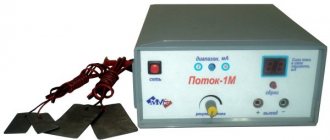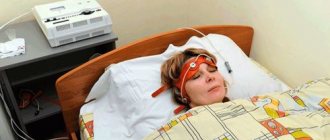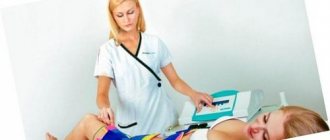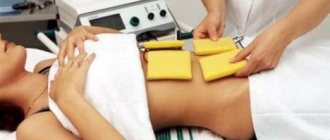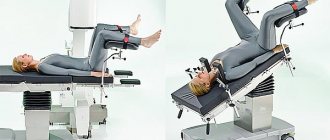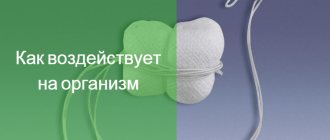Mechanism of action
Lidaza is a drug that is very often recommended for use in electrophoresis.
The enzyme agent affects connective tissues - it destroys their main component, namely hyaluronic acid. Thanks to the use of Lidaza for scars and adhesions, their gradual resorption is observed, in addition to which an analgesic effect is manifested. Thanks to this, it is possible to effectively treat adhesive pathologies in the pelvis, abdominal cavity, and also in the inner ear.
Electrophoresis is the most preferable treatment method than, for example, intramuscular administration of the drug. During the procedure, the decomposition of the drug into ions is observed. Iontophoresis promotes easier and faster penetration of the drug through the pores, sweat, and sebaceous glands, ensuring its entry directly into the intercellular tissue and cells.
The positive impact of the procedure is expressed in:
- Elimination of local swelling
- Neutralization of the inflammatory process
- Vasodilation
- Acceleration of metabolic processes
- Normalization of skin nutrition.
In addition, electrophoresis:
- Does not cause pain
- Allows drugs to penetrate directly into the problem area
- Maintains the effect of the drug for 20 days.
- Does not have a negative effect on the gastrointestinal tract
- Accessible to everyone (appropriate equipment is available in every medical institution).
Treatment method for scars
The exposure time of electrophoresis with Lidase on scars is on average 15-20 minutes. Before the procedure you will need:
- Soak a small piece of cotton cloth with the medicine, which is then placed under the electrode
- It is placed on the surface of the scar
- The second electrode should be located on the opposite side of the scarring area, thus creating an electric field between the pads
- Film is placed on top
- You need to turn on the device and set the necessary current parameters.
A slight tingling sensation will be felt during the electrophoresis procedure. If there is a burning sensation, it is necessary to reduce the intensity of exposure to electrical impulses.
The course of treatment involves 10 sessions, which are carried out daily. After this, the skin condition is assessed. If necessary, after 1 month. repeat treatment is possible. Therapeutic therapy will be much more effective if after 2 weeks. from the moment the course is completed, a procedure with hydrocortisone will be carried out. Each of the drugs helps reduce collagen production, eliminates the inflammatory process, due to which the scar becomes almost invisible.
Instructions for use
The substance in question increases the effectiveness of the physiotherapy procedure. It is used in the form of a solution in which tampons are moistened and placed in the affected area. The cathode is installed in the tampon, and the anode is installed in the opposite point. Next, an electric current is started, the power of which increases as you get used to it.
The instructions for use are quite simple, which allows you to use the product in combination with electrophoresis and at home.
The positive effect of the substance in question is noted in the following conditions and diseases:
- for ENT diseases - otitis media of varying severity and etiology, diseases of the nasopharynx, throat, nasal passages;
- for joint pathologies - arthritis, arthrosis, inflammation of joint capsules and ligaments;
- for nervous disorders - migraines, sleep disorders, nervous disorders;
- in gynecology - for infertility, frequent inflammatory processes, adhesions in the uterine cavity and fallopian tubes;
- diseases of the cardiovascular system are also susceptible to the effects of electrophoresis using lidase - blood flow improves, the permeability of the walls of blood vessels increases.
The listed qualities of lidase are used in therapy in various areas of medical treatment. The method of using the considered method of physiotherapeutic influence may vary depending on the area of application, but the effectiveness of the influence is always quite noticeable.
However, this method of therapeutic treatment has a number of contraindications that should be taken into account when prescribing a treatment method. These include:
- exacerbation of inflammatory processes;
- carrying a pregnancy;
- lactation period.
DETAILS: Physical therapy for chronic prostatitis Urology website
Electrophoresis with Lidase on scars is widely used in cosmetology, since this enzyme actively breaks down hyaluronic acid, which is the basis for the formation of scars on the skin. It is important to note that the procedure should be performed in the first days and weeks after the appearance of damage to the skin, for example, with postoperative sutures.
The technique for performing electrophoresis with Lidaza in cosmetology is as follows:
- The drug should be diluted to a certain concentration, which was selected by the attending physician. A fabric pad in which the electrode is placed is impregnated with this solution.
- The electrode is carefully fixed in the scar area using a gauze bandage or special bandages. The second electrode should be placed opposite the first to ensure local formation of the electric field.
- The doctor, or the patient himself if the procedure is performed at home, sets the required current strength and other parameters on the device, and then turns on the device.
- Upon completion of physical therapy, the electrodes are carefully removed from the skin.
Effective therapy requires a course of treatment of 10-15 sessions, each lasting about 10 minutes. If the procedure is performed on a child, then the time and number of sessions should be halved. If it is necessary to repeat sessions, a two-week break should be provided to restore tissue sensitivity to electric current.
Application in gynecology
Carrying out the procedure of electrophoresis with Lidase in gynecology gives a good therapeutic effect when prescribing combination therapy. With regular electrophoresis, it will be possible to quickly stop the inflammatory process and prevent the progression of gynecological pathologies, eliminate adhesions, and normalize hormonal levels.
How the procedure is carried out:
- The fabric pad is moistened with a medicinal solution, which is previously diluted by the doctor.
- The electrode is attached inside a hydrophilic material. During the session, two pads with electrodes of different polarities are used, which allows you to create a weak electromagnetic field.
- It is possible to administer the medicine into the rectum or directly into the vagina. One of the electrodes is fixed inside, the second is fixed outside.
- The device turns on. The procedure is accompanied by a slight tingling sensation.
The time interval between sessions is 10-15 days. The duration of treatment depends on the nature of the disease; the dose of the drug is determined individually.
Electrophoresis in gynecology: the use of zinc, magnesium, copper and potassium iodide on the lower abdomen
Electrophoresis is a therapeutic and preventive method of physiotherapy, which results in deep penetration of active ions of the solution into tissues.
More often, electrophoresis in gynecology is prescribed if inflammation is detected. The name of the medicinal substance is selected by the gynecologist taking into account the diagnosis. In the absence of contraindications, therapy is combined with other methods.
Pros and cons of the technique
Electrophoresis effectively affects swelling, pain, and inflammation. The therapy has a calming effect, improving microcirculation, stimulating the production of vitamins and hormones, and activating the body's protective function. The manipulation does not cause pain. During this procedure, the patient may experience a slight tingling sensation at the injection site.
Advantages of prescribing electrophoresis for gynecological pathologies:
- Administration of the drug in a small volume, which minimizes the risk of negative effects.
- The drug is concentrated in the area where the electrodes are applied.
- Due to local application, it is impossible for the solution to pass through the gastrointestinal tract.
- Penetration of the solution into the site of inflammation.
- The process of splitting the drug into ions provides the highest possible therapeutic effect.
- Possibility of use for pregnant women.
Indications for electrophoresis include operations, impaired development of female reproductive organs, uterine hypoplasia, pathologies of the mammary glands, and inflammatory processes in the uterus.
The therapy also works positively in the absence of ovulation or hormonal imbalance.
If tubal infertility is suspected, a comprehensive examination is carried out. If the diagnosis is confirmed, electrophoresis is prescribed.
The manipulation in question is also used for tubal obstruction . In 39% of cases, gynecologists diagnose peritoneal infertility. It is provoked by adhesive processes occurring in the appendages. Causes of development include surgery, endometriosis and inflammation.
Any surgical intervention in gynecology can provoke an adhesive process. Therefore, electrophoresis is carried out in the postoperative period in order to accelerate tissue regeneration.
The doctor must first rule out the presence of the following contraindications to therapy:
- oncology of any localization and pathogenesis;
- problems with blood vessels and heart;
- acute inflammation with high body temperature;
- skin lesions, including eczema and dermatitis;
- intolerance to electrical procedures.
Some gynecologists do not recommend undergoing physical therapy with electrodes during menstruation.
But this process is not a contraindication with electrophoresis.
Mechanism of influence on the disease
Galvanization or electrophoresis involves the use of an electric charge in medicine. Against the background of manipulation, blood flow increases, a constant supply of nutrients in the right quantities is ensured, and the healing process is accelerated.
Drug electrophoresis uses current pulses and medications.
Taking into account the diagnosis, gynecologists prescribe galvanization with copper, iodine, zinc and other medicinal solutions.
The choice of medication depends on the current hormonal background, the state of the hormone-dependent pelvic organs and ovaries.
The indication for undergoing electrophoresis on the lower abdomen in gynecology is incomplete functioning of the corpus luteum.
Excessive production of estrogen requires the use of iodine. If ovarian hypofunction is confirmed, copper is used.
If necessary, IVF is performed before the physical procedure. Such complex treatment is indicated for endometriosis. The absence of contraindications allows you to combine drugs.
Electrophoresis with magnesium in gynecology is prescribed for inflammation in the pelvic area, a chronic process, a disrupted cycle, and adhesions. Carrying out therapy in the subacute period contributes to the patient’s rapid recovery.
List of basic medicines used for treatment:
- Electrophoresis with zinc on the lower abdomen. The composition percentage fluctuates within 0.5. The medicine is used for endocervicitis and erosion. Medicines are prescribed for partial dysfunction of the corpus luteum.
- Potassium iodide is effective against a chronic process accompanied by pain.
- Magnesium and calcium, novocaine help eliminate pain.
- To soften cicatricial and adhesive processes, lidase and zinc preparations are used. Against the background of such combinations, the normal course of pregnancy is ensured.
- Painkillers are used to treat painful periods. Prescribe 6-8 manipulations before the cycle.
Complex treatment of pathologies
Physiotherapy can be carried out with the help of vitamin complexes, enzymes, antiseptics, sedatives and vasodilators. For administration through the skin and mucous membranes, medications such as Papaverine and Eufillin are used. The combination of drugs depends on the condition of the female body and the identified pathology.
Frequent physiotherapy regimens for various ailments:
- Algomenorrhea or painful menstruation that occurs a few days before the start of the cycle. The phenomenon passes through a certain period of time. Pain appears with varying intensity. Electrophoresis therapy is aimed at relieving pain and spasms. Novocain is used from medicinal solutions. Electrodes are placed on the lower abdomen. Therapy consists of 6-8 manipulations. The gynecologist calculates the days so that the therapy is completed before the onset of menstruation.
- Inflammation caused by hypothermia or infection entering inside. Electrical therapy is indicated after acute inflammation has been relieved.
- Electrophoresis with iodine in gynecology is used to consolidate the effect of the main treatment. Additionally, potassium iodide is used. The solution relieves inflammation. The manipulation has a positive effect on the endocrine system, balancing the performance of the ovaries, thyroid gland and pituitary gland.
- To combat erosion, it is recommended to use a 2.25% zinc solution.
- To increase blood circulation for various ailments, electrophoresis with lidase is prescribed. The effectiveness of therapy during the adhesive process in the tubes of the reproductive organ has been proven. A similar treatment regimen is used for infertility. But therapy is contraindicated if the patient is allergic to lidase. The medicine can be diluted with water, alcohol, Dimexide.
The use of zinc and copper for pregnant women
The difference in the manipulations performed lies in the name of the medicine used. Sometimes cavity electrophoresis is indicated, in which the first electrode is inserted into the vagina, and the second remains outside. This therapy is carried out with zinc, calcium, magnesium, hyaluronidase, lidase.
Manipulation with zinc and copper is indicated during IVF to balance the balance of progesterone and estrogen.
With the use of copper, excessive estrogen production is reduced.
Zinc supports the luteal phase.
The therapy corrects ovarian hypofunction in order to achieve successful conception.
It has been proven that electrophoresis with zinc has a multifaceted effect. It quickly eliminates adhesions, providing an immunomodulatory effect, normalizing progesterone activity. By stimulating the secretion of appropriate hormones, infertility is treated. The difficulty of manipulation lies in the lack of equipment in all medical institutions.
Pregnancy is a period when many medications are contraindicated. Some medications cause miscarriage, while others cause abnormalities in the development of the embryo. Electrophoresis is one of the safest therapeutic techniques during pregnancy.
Separately, gynecologists highlight a list of medications that do not harm intrauterine development. Due to direct impact only on the source of inflammation, rapid recovery is ensured.
To achieve a therapeutic result, you must adhere to the regimen prescribed by the gynecologist.
The main indications for undergoing electrophoresis for pregnant women:
- hypertonicity of the uterus;
- there is a possibility of miscarriage;
- gestosis or swelling caused by gestosis.
During therapy, electrodes are applied to the cervical-collar area or nasal mucosa.
Avoid placing electrodes on the abdomen . Vitamins and essential microelements may be added. Pregnant women are prescribed electrophoresis after 8 weeks.
Magnesia, Papaverine, and suppositories with a low concentration of aminophylline are used more often.
Contraindications for undergoing electrophoresis during pregnancy:
- a condition of the embryo in which exposure to drugs or electric current is contraindicated;
- poor blood clotting;
- kidney and liver diseases;
- late gestosis and convulsions;
- constant vomiting;
- nausea.
Reviews from women and gynecologists
Most patients who have undergone electrophoresis treatment leave positive feedback about the procedure.
Current therapy with lidase is more often prescribed. This diagram is shown for conception. Some women have undergone such treatment to get rid of toxicosis. Electrophoresis, affecting the vomiting centers of the brain, improves the well-being of the expectant mother.
Despite the large number of positive reviews, gynecologists advise taking the therapeutic method under consideration seriously. A medical procedure can only be prescribed by a qualified specialist. The condition and contraindications to electrophoresis are taken into account in advance.
After my second birth, I had a relapse of cervical erosion. The gynecologist suggested undergoing electrophoresis treatment after laboratory tests. The pain disappeared almost immediately. 3 months have already passed since the treatment. Feeling good.
Anastaia, 28 years old
I couldn't get pregnant for many years. Tests, useless IVF, etc. became part of my normal life. But any method suggested by the doctor for conception was not effective. We decided to combine IVF with electrophoresis. When, 3 weeks after therapy, I went to a gynecological consultation, I found out about pregnancy.
Ekateriana, 32 years old
I was constantly bothered by painful periods. I consulted with a gynecologist. Electrophoresis was prescribed. At first I was afraid, but the physiotherapist explained everything to me before the procedure. I felt relief already after 2-3 sessions. After the course of treatment, the pain disappeared. Already the first menstruation was normal.
Elena, 25 years old
Source: https://mesyachnye.expert/poleznye-stati/pokazanija-k-jelektroforezu-s-medju-i-cinkom-v-ginekologii
Treatment of otitis media
Therapeutic therapy is indicated for both adults and children. The electrophoresis procedure with Lidaza on the ears is carried out as follows:
- Gauze swabs soaked in solution are inserted into the ear
- An anode is placed in the area of the cervical vertebrae
- After this, current is supplied.
The duration of the procedure for a child is 10 minutes, for an adult – 15 minutes. It is recommended to carry out electrophoresis for the ears according to the scheme prescribed by the doctor. After 7-8 sessions, a visible therapeutic effect is observed - hearing is restored, the inflammatory process is eliminated.
Areas of use
Being an antitumor, absorbable drug with a pronounced anti-inflammatory effect, lidase is used to reduce the appearance of scars and scar tissue, and is used in gynecology, as well as for ENT diseases.
Scars
When performing electrophoresis using a lidase solution, a gradual softening of tissue is noted, which is successfully used when it is necessary to eliminate fresh and old scars. Softening tissues, restoring the natural firmness and elasticity of tissues by activating the movement of fluids in them are the most obvious positive results of this procedure.
Electrophoresis with lidase on scars can reduce the degree of discomfort and pain. It should be used when treating fresh scars: this is how the medicinal properties of the drug are more pronounced. Swelling is eliminated, scars become less noticeable, the pronounced area with rough skin becomes softer.
ENT diseases
Otitis, which can occur in both children and adults, can be cured by electrophoresis using lidase. To carry out the procedure, tampons are made from gauze, which are generously moistened with lidase solution. The cathode is also moistened with the drug, which, together with tampons, is inserted directly into the ear canal. The anode is placed by a physiotherapist on the area of the cervical vertebrae.
Next, a current is supplied, the power of which gradually (as the patient gets used to it) increases. According to medical statistics, such treatment makes it possible not only to eliminate pain and stop the inflammatory process, but also restores hearing, which often decreases with the development of otitis media. Also, with the help of such physical therapy, the risk of scarring of the tissues of the ear canal is prevented.
Electrophoresis with lidase in gynecology can be used for various purposes. However, the main effect of this drug when used in combination with electric current is the prevention and elimination of adhesions, which often cause infertility, inflammatory processes, and edema.
The early stages of most gynecological diseases are most treatable using lidase electrophoresis. The method of exposure consists of dissolving hyaluronic acid, which causes the formation of adhesions, since it is a structural element of connective tissue.
Following the doctor's recommendations and combining medication with a course of electrophoresis procedures with lidase allows you to increase the degree of positive effect and eliminate the most obvious manifestations of many diseases.
DETAILS: Urology of hypospadias, what causes it
Electrophoresis with Lidase solutions is also used in other areas of medicine. The use of this method of treatment is especially effective in the presence of adhesions in anatomical areas, for example, in the cavity of the middle ear, etc. Lidaza allows you to quickly eliminate the adhesions and restore the patency of the auditory canal and fallopian tubes.
In addition to otorhinolaryngology and gynecology, physiotherapy is actively used in ophthalmology to influence diseases of the eyeball. It is important to note that in this case the doctor must properly dilute Lidaza, observing the proportion indicated in the instructions with the buffer.
The use of electrophoresis is justified for diseases of the urinary system and symptoms of its damage: frequent urination, pain in the bladder (lower abdomen), erectile dysfunction. In these cases, in addition to the cutaneous application of electrodes, endural administration is possible.
Contraindications
It is also necessary to take into account a number of contraindications to electrotherapy:
- Presence of skin diseases (dermatitis, signs of eczema, wounds)
- Diagnosis of tumors
- Tendency to bleed
- Increased body temperature
- The course of an active inflammatory process
- Bronchial asthma
- Excessive sensitivity to drug components.
Before starting treatment, it is necessary to conduct a sensitivity test to the components of the drug.
Electrophoresis with lidase
The use of the drug lidase in gynecology is due directly to the action of the main substance of the drug - hyaluronidase. Hyaluronidase is an enzyme that breaks down the component of the interstitial substance of connective tissue - hyaluronic acid. Therefore, the main pharmacological effect of the drug is to increase tissue and vascular permeability, facilitate the movement of fluids in the interstitial spaces, and soften scars. Because of this effect, lidase is often prescribed in gynecology for the treatment of adhesions in the fallopian tubes.
Adhesions are scar-like formations of connective tissue; therefore, one of the treatment methods is the administration of lidase. Adhesive processes can cause infertility in women. Today, there are two ways to treat adhesions – surgical and conservative. Naturally, the most effective and fastest method is the surgical method: in case of severe adhesions, they are dissected. However, this method is not always effective for recurrent inflammatory processes. Therefore, complex conservative treatment is very often used, which involves influencing already formed adhesions and preventing inflammatory processes, due to which adhesions often arise. One of the methods of conservative treatment is the use of enzyme preparations, and, as an option, lidase.
Lidaza is a drug of animal origin, isolated from the testes of cattle. Since it is more physiological in origin, with long-term and massive drug treatment its side effects will be lower compared to chemotherapy.
The use of lidase in gynecology
The most common method of administering the drug is electrophoresis with lidase - a physiotherapy procedure in gynecology, in which the substance is delivered directly to the affected organs. Electrophoresis is a complex effect of direct current and drugs administered with it. This is a unique combination of a gentle method of action and level of effectiveness: the medicine is administered in minimal doses, without involving the digestive system, bypassing the blood and lymph, directly to the affected area.
Lidase is also quite often used in gynecology in the form of suppositories, which are used to treat interstitial cystitis and tubo-peritoneal infertility. Lidaza in the form of injections in gynecology is used less frequently and mainly directly during surgery. When administered subcutaneously, the effect of the drug is 48 hours.
The use of lidase in gynecology is most effective in the initial stages of the disease - after suffering pelvic inflammatory processes, adnexitis, salpingitis, endometriosis, and surgery. However, even in chronic cases of fallopian tube obstruction due to previous illnesses, treatment with lidase is advisable in combination with physical therapy and diet.
Often, in the treatment of gynecological diseases, tampons with lidase, Vishnevsky ointment, and dimexide are used. In this case, lidase improves the absorption of drugs.
It should be noted that acute infectious and inflammatory processes are a contraindication for the use of lidase in gynecology, as well as hypersensitivity to the drug, concomitant use of estrogens, recent hemorrhages, breastfeeding, and pregnancy. When prescribing this drug, it is recommended to conduct a sensitivity test to hyaluronidase: 0.02 ml of hyaluronidase is injected intradermally and the sample is evaluated.
And most importantly, in any case, for any course of disease, a qualified consultation with a specialist doctor is necessary, and the use of lidase in gynecology only after its prescription.
Application in medical practice
Electrophoresis with longidase is used in gynecology, surgery, urology, orthopedics, and pediatrics. Current therapy is based on the movement of drug particles under its influence. The drug is evenly distributed in the tissues and is gradually absorbed, with its maximum amount concentrated in the area of administration.
The percentage of drug distribution depends on the concentration of longidase, current strength, and ion size. The influence is exerted by the patient’s physiological data, diagnosis, and number of procedures. During physiotherapy sessions, the substance reduces the degree of inflammation and has a local anesthetic and sedative effect. In addition, tissue trophism is normalized and blood circulation improves.
Electrophoresis in childhood
Drug electrophoresis with Lidase can also be used in children. Many parents fear that exposure to electric current can lead to health problems and disruption of the child's development. Such fears are unfounded. The current values used are completely safe for children of any age, and therefore physiotherapy can be used to treat a large number of pediatric diseases - inflammatory diseases of the eyes, ears, etc.
Prescription of medicinal electrophoresis in childhood should always be carried out only by a pediatrician. The doctor needs to carefully examine the child and identify his indications and contraindications for this type of physical treatment or its analogues.
Correct use of electrophoresis with Lidase allows you to effectively treat various diseases associated with damage to internal organs and skin. Before prescribing therapy, the attending physician must assess the patient’s health status and the presence of restrictions for carrying out the physical procedure.
Lidase, due to the destruction of hyaluronic acid, allows you to reduce the severity of scars on the skin, eliminates adhesions, which is widely used in gynecology, ophthalmology, neurology and other areas of medicine. It is important to note that when carrying out the procedure at home, you must strictly follow the instructions for using the electrophoresis device.
Mechanism of action
The therapeutic effect of longidase is to reduce inflammation in the tissues of organs and systems. The substance gradually accumulates in the dermis, then enters the blood and lymphatic system. Within 30 minutes, the drug spreads throughout the body and is excreted in the urine.
The property of longidase to influence acute pathological processes is used in the treatment of prostatitis, scleroderma, pneumonia, and endometritis. The medication successfully copes with postoperative adhesions, burns, colloid scars, and joint diseases.
Gaskets with conductive plates are impregnated with the solution. They are connected to opposite-polar electrodes connected to the device (the medicine is administered from the anode). Depending on the area of pathology, the method of application changes. The patient's current tolerance must be taken into account, in particular in otolaryngology.
During the session, the patient should not feel pain, a slight tingling sensation is acceptable.
A total of 3 to 20 sessions may be required, the interval between them no more than 2 days. The number of procedures is determined by a physiotherapist or cosmetologist depending on the indications and tolerability of the therapy. For those patients who cannot constantly attend a physiotherapy office, electrophoresis is performed at home.
After the procedure, a longidase depot is created in the skin and adjacent tissues, which is consumed within 1-2 days. Slow elimination promotes active and long-lasting effects of the enzyme. With this treatment, the organs of the gastrointestinal tract are not affected, unlike the use of an oral or intramuscular form. The effect of the drug on the liver and kidneys is minimized. The local effect of the pharmacological substance occurs painlessly, without damaging the skin.
Indications and contraindications
Electrophoresis with longidase is used to reduce scars, adhesions, and in the treatment of burn wounds. The medicine reduces pain and relieves swelling. Solutions with this drug have a pronounced therapeutic effect against diseases of the joints and ENT organs, and are widely used in urology.
It is worth noting that electrophoresis with longidase is used as an auxiliary treatment.
The drug effectively eliminates ulcers, hematomas, and adhesions. In pediatrics, electrophoresis with longidase is used for otitis. Gauze swabs soaked in medicine are inserted into the ear canal. Another electrode is attached to the lower cervical vertebrae. According to patient reviews, hearing improves after the procedure.
In gynecology, electrophoresis with longidase eliminates adhesions, which often lead to female infertility. After a course of therapy, blood circulation improves and metabolic processes improve. To achieve quick results, physiotherapy is combined with drug treatment. Before starting use, it is necessary to test for individual sensitivity to Longidase. The enzyme increases tissue elasticity and also accelerates the healing of wounds and hematomas.
Indications for use
Scientific research has confirmed the effectiveness of the technique in the treatment of many pathological processes to which the female body is susceptible. Namely:
- complications after surgery;
- anomaly of the female genital organs;
- pathology of uterine development;
- adhesions of various etiologies;
- pelvic neuralgia;
- chronic cystitis;
- violation of the patency of the fallopian tubes;
- inflammatory processes of the pelvic peritoneum and fatty tissue;
- inflammation of the uterus and mucous membrane;
- violation of the female reproductive system;
- sexual dysfunction due to hormonal imbalance.
For prevention purposes, the method is used to prepare women for in vitro fertilization and at the preparatory stage of pregnancy planning. Clinical studies to expand the areas of application of medicinal electrophoresis in gynecology are ongoing to this day.
There are many reasons for female infertility. One of them is obstruction of the fallopian tubes. This may be a consequence of the formation of adhesions in the fallopian tubes after any surgery, abortion, or due to an infection.
In modern medicine there are a lot of treatment procedures and drugs that can successfully combat this problem. An excellent remedy is Lidaza suppositories, which act on tissues, split them, causing them to become less viscous, which means that liquid can move through the pipes quite freely.
Side effects
A complication after medicinal electrophoresis may be allergic reactions to longidase or electric current. In rare cases, if the power is calculated incorrectly or as a result of a violation of the contact of the working electrode with the surface of the body, a burn may occur. Discomfort, manifested by a burning sensation or slight itching, and mild hyperemia go away on their own and do not require specific therapy. But in case of more severe symptoms, it is necessary to inform the doctor and replace electrophoresis with another method of physical therapy.
Since the drug acts locally on the site of inflammation, other side effects do not occur. The active form of the drug enhances the effect of treatment.
Alternative therapy
There are no exact synonyms for the drug on the pharmaceutical market. Longidaza can be replaced with a cheaper analogue: Actinohyal, Lidaza, Ronidaza. The active ingredient in the preparations is hyaluronidase. According to the instructions for medications, they are also used in the form of injection solutions, added to medicinal ointments, and used in the form of suppositories.
Unlike generics, Longidaza is characterized by a strong antioxidant effect and helps improve local and general immunity. According to recent clinical studies, a selective effect on pathologically changed lesions has been proven, while normal connective tissue does not change. It would also be advisable to use electrotherapy together with a drug in the form of suppositories - this will enhance the effect.
Please note that hyaluronidase should not be injected directly into or near the site of infection, as this increases the risk of local spread of inflammation.
To speed up wound healing, during adhesions, non-traditional treatment can be additionally used: local application of calendula flower oil, aloe extract. However, before starting therapy, it is necessary to exclude individual intolerance to plant components.
The main advantages of the technique are prolonged action and no stress on the gastrointestinal tract. This reduces the likelihood of developing side effects. The safety of electrophoresis with longidase has been confirmed by the positive dynamics in the treatment of many diseases, which allows for the possibility of its use in pediatric practice.
The essence of the method and the effectiveness of treatment
Electrophoresis is a type of physiotherapy, which is a combination of the properties of direct current and various medications.
Reference . The main medications used in electrophoresis include Lidaza, Eufillin, Karipazim, Hydrocortisone, Dimexide, Novocain, calcium, and B vitamins.
The essence of the method is the effect of electrical impulses on the body. They are generated by the device and have a therapeutic effect at the general and local levels. At the same time, the drug is administered percutaneously.
Thanks to this, the procedure can have the following therapeutic effect on the body:
- Elimination of inflammation, pain, swelling.
- Improved blood circulation.
- Normalization of muscle tone.
- Activation of the body's immune system.
- Acceleration of regeneration processes.
- Normalization of metabolic processes.
- Promoting the production of biologically active substances.
The method of administering medications using electrophoresis has a number of undeniable advantages:
- Painless.
- Minimal side effects.
- The long-term therapeutic effect of the administered medication is up to 20 days.
- Injection of the drug directly into the lesion.
- A small concentration of the drug, with which it is possible to achieve a high therapeutic effect.
An important advantage is the availability of such treatment , because equipment for carrying out this physiotherapy is available in almost every hospital.
Indications and contraindications
Electrophoresis using Lidase can be used in the treatment of many diseases, including various lesions of the musculoskeletal system:
- osteochondrosis,
- osteoarthritis,
- joint contracture,
- intervertebral hernia,
- arthritis,
- arthrosis,
- polyarthritis,
- osteoporosis,
- spondylosis,
- ankylosing spondylitis,
- inflammatory processes of various origins,
- recovery period after operations, injuries and endoprosthetics.
Electrophoresis with Lidase may be prescribed for scars (hypertrophic and keloid), since this procedure can eliminate such cosmetic defects on the skin.
In addition, the physiotherapeutic procedure has found its application in other areas of medicine - surgery, gynecology, dermatology, neurology, cardiology, pulmonology.
As for contraindications, electrophoresis has a number of limitations:
- individual intolerance to electric current,
- hypersensitivity to the drug used,
- bronchial asthma,
- general poor health of the patient,
- increased body temperature,
- violation of the integrity of the skin at the sites where the electrodes are installed,
- presence of a pacemaker,
- malignant neoplasms,
- acute dysfunction of the liver and kidneys,
- severe cardiovascular failure,
- severe mental disorders,
- violation of the blood clotting process,
- period of exacerbation of any illness.
There are relative contraindications : pregnancy, children under 2 years of age, arterial hypertension during exacerbation.
Contraindications and indications for physiotherapeutic procedures
To avoid undesirable consequences, the procedure is strictly prohibited if the patient:
- malignant tumor;
- cystic changes in the pelvic organs;
- skin disease;
- elevated temperature;
- disease of the cardiovascular system;
- heavy bleeding;
- low level of blood clotting;
- bronchial asthma;
- purulent lesions of the female genital organs;
- venereal diseases;
- severe diseases of the endocrine system;
- damage to the skin in the area where the pads are applied;
- pulmonary tuberculosis complicated by respiratory failure;
- increased sensitivity to electrical discharges;
- allergic reaction to the administered drug.
Pregnancy and lactation are considered not the most suitable times to use this technique.
The procedure is performed for the following conditions and diseases:
- restoration and prevention of endometritis after abortion, curettage, pregnancy loss;
- express sanitation of the genital tract before intrauterine manipulation;
- treatment of acute and chronic endometritis;
- preparing the endometrium for IVF;
- recovery after caesarean section;
- with atrophic colpitis in postmenopause.
Ultrasound can be used to treat wounds after episiotomy and cesarean section. But there are contraindications to the procedure:
- oncological diseases in the field of treatment;
- menstruation or bleeding of unknown origin;
- blood diseases;
- pathology of the cardiovascular or nervous system in a severe stage;
- allergic reactions to the drugs used.
Ultrasonic cavitation during pregnancy is contraindicated in the first trimester. In the 2nd and 3rd trimester, you can treat colpitis, vaginitis, vaginal candidiasis or other infectious processes without fear of harm.
But the technique is not used for excitability or increased tone of the uterus. When breastfeeding, ultrasonic cavitation is not contraindicated; medications act locally and do not penetrate the mother’s bloodstream.
Process
The procedure is carried out by hospital staff in the physical room, and the patient does not require any special preparation.
Reference . There are devices for home therapy (“Potok-1”, “AGN-32”, “Elfor”), each of which has detailed instructions for use at home.
The procedure for administering the drug using electrophoresis is simple and consists of several stages. Let's look at the example of introducing Lidase:
- Inspect the skin where the pads are applied to ensure there are no wounds, scratches, or abrasions.
- Next, one piece of gauze is soaked in the prepared Lidase solution. The second section is impregnated with another preparation. Eufillin is usually used.
- One gasket is attached to the plus, and the second - to the minus.
- Placement of gaskets on the problem area.
- Turning on the device and debugging the mode (selected individually).
- During the session, tingling may be felt at the site where the electrodes are attached.
- After a certain time, the doctor turns off the device and removes the pads, and the patient can leave the office.
The average duration of the procedure is 10-15 minutes. The treatment course includes 10-20 sessions.
How to dilute Lidaza for electrophoresis
For the therapeutic procedure, you need to the powder of 1 bottle of Lidase in 60 ml of distilled water and add a few drops of hydrochloric acid solution (0.1%).
The mixture is injected onto the affected area from the anode. The prepared solution must be used within 24 hours.
Reviews
Most reviews about electrophoresis with Lidase are positive, so we can conclude that the technique is really effective for treating a wide variety of diseases.
Let us give as an example several opinions of people who were prescribed such treatment.
Elena: “From time to time I was bothered by back pain. The doctor prescribed me to take a course of electrophoresis with Lidaza.
After the first procedure, I felt some relief, and after the entire course of treatment, I forgot about the pain and was able to return to my normal lifestyle.”
Anton : “The procedure helped me smooth out the scars on my arm that formed after an injury. The scars were reddish, uneven, and very noticeable. After treatment they became almost invisible.”
Irina : “Electrophoresis with Lidaza helped me in the treatment of osteochondrosis of the neck. The pain was terrible, there was an unpleasant crunching and stiffness, because of which I could hardly turn my head. After completing the course of treatment, I felt like a human being. All symptoms have disappeared."
